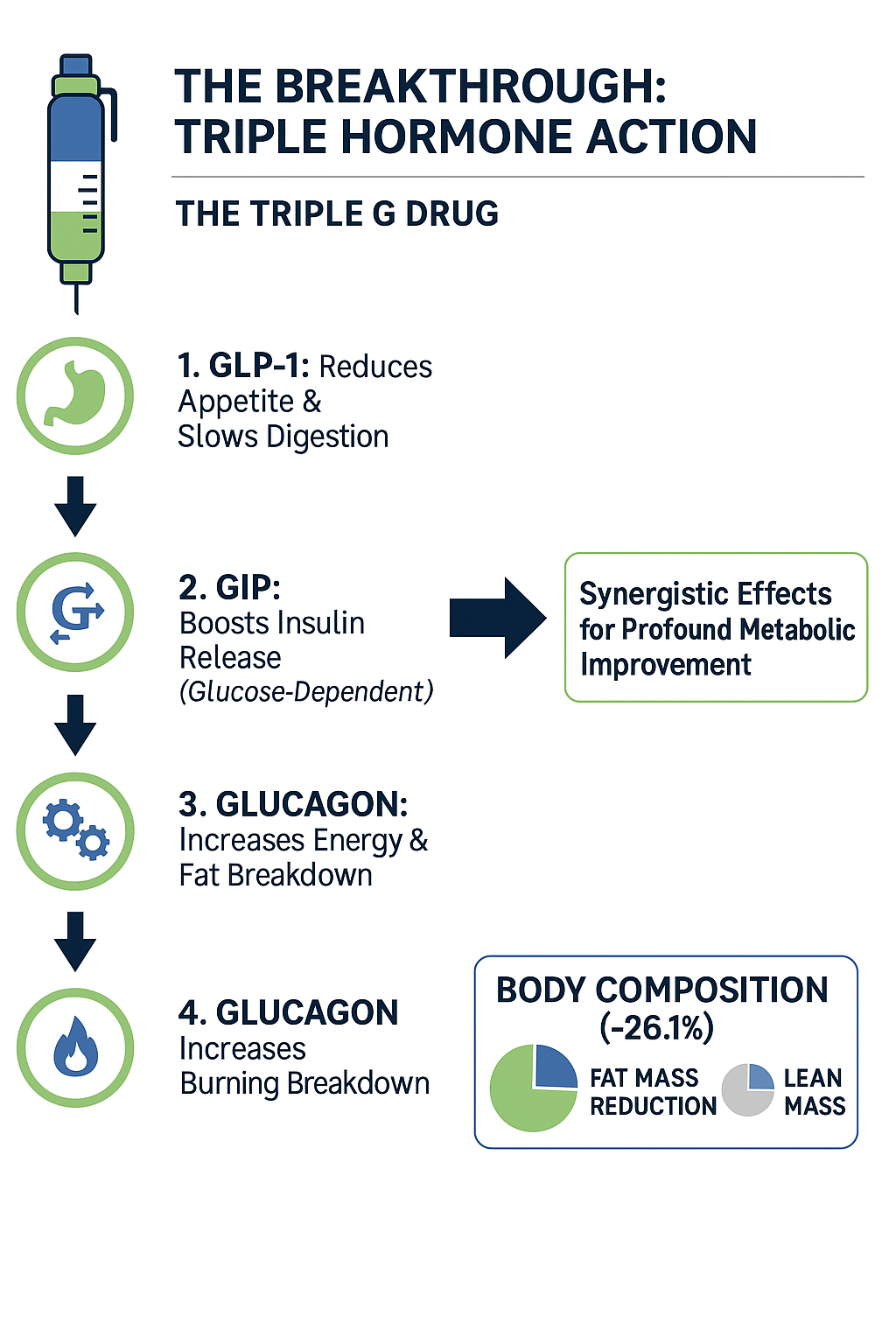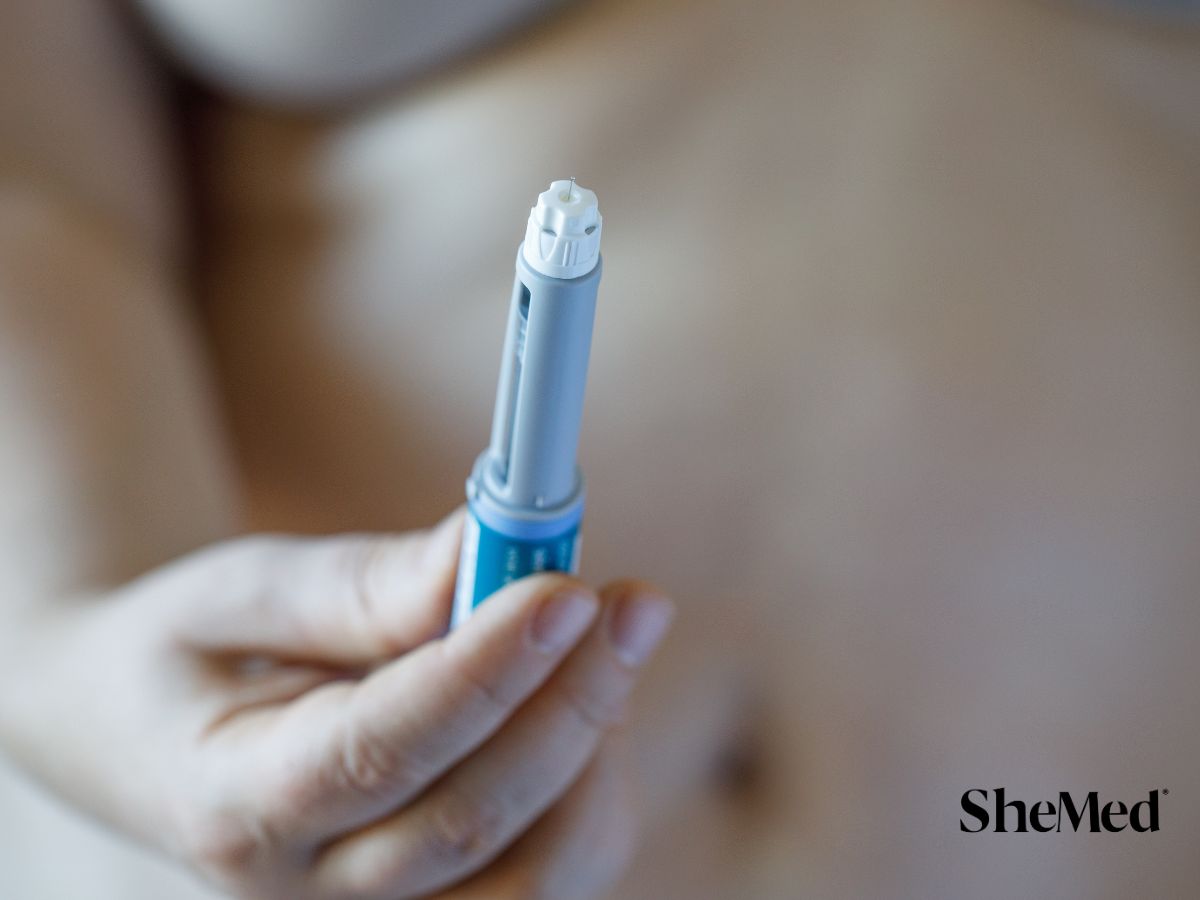
Have you ever looked in the mirror and felt as though your body just wasn’t keeping up with the changes you’d hoped to see? Rapid weight loss on GLP-1 can be exhilarating, yet it often leaves women struggling with mixed emotions about their appearance. While shedding pounds may be the goal, the journey of adapting to a new body can be unexpectedly challenging, with body image issues sometimes surfacing just as quickly. In fact, studies show that up to 40% of women undergoing significant weight loss experience increased body dissatisfaction, despite their progress.
For many, the desire to look in the mirror and see a version of themselves that reflects not just a healthier weight but genuine confidence and self-acceptance is universal. The reality of adapting to rapid changes can sometimes feel disorienting, but there are ways to foster a positive body image through this transformative process. Let’s explore how to turn rapid weight loss into a journey of self-empowerment and positivity.

Understanding Body Image
Body image refers to the internal representation of one's physical appearance, encompassing thoughts, feelings, beliefs, and behaviours related to the body. Research shows that approximately 40% of adolescent girls and 22% of boys express dissatisfaction with their body weight, highlighting the prevalence of body image issues among youth.
It is a complex construct influenced by various factors including:
- Cultural and Societal Standards: Media portrayals of ideal body types can lead to unrealistic expectations. For instance, studies indicate that exposure to idealised images can distort self-perception, contributing to body dissatisfaction.
- Family Dynamics: Family attitudes towards weight and appearance significantly shape an individual's body image. Negative comments or comparisons can lead to lasting impacts on self-esteem and body perception.
- Peer Influence: Social interactions, especially during adolescence, play a crucial role in shaping body image. Peer pressure can exacerbate feelings of inadequacy or promote unhealthy behaviours aimed at achieving perceived ideals.
- Mental Health: Conditions such as anxiety, depression, and eating disorders are closely linked with negative body image. Individuals with poor body image often experience heightened levels of distress and may engage in harmful behaviours such as excessive dieting or exercise.
The Psychology of Weight Loss
The emotional and psychological aspects of weight loss are multifaceted. Individuals often embark on weight loss journeys with the hope of improving their body image; however, this process is frequently accompanied by emotional challenges:
- Fear of Weight Gain: A prevalent concern among those who lose weight is the fear of regaining it. This anxiety can lead to restrictive dieting practices and unhealthy relationships with food. Studies indicate that this fear often perpetuates a cycle of yo-yo dieting, which can be detrimental both physically and psychologically.
- Body Dissatisfaction: Many individuals associate weight loss with improved self-worth; however, achieving a desired weight does not always correlate with improved body image. Research suggests that even after significant weight loss, individuals may still perceive themselves negatively due to ingrained societal standards.
- Emotional Eating: Emotional factors often drive eating behaviours. Individuals may use food as a coping mechanism for stress or emotional pain, complicating their relationship with both food and their bodies.
Clinical Studies
- A systematic review highlighted that adolescents' perceptions of body image are shaped by multiple factors including media influence and peer dynamics. This review emphasised the need for targeted interventions in community health settings to promote positive body image among youth.
- A systematic review on the correlation between exercise motivations and body image found that individuals who exercise for functional benefits tend to have a more positive body image compared to those who exercise primarily for aesthetic reasons.
- Research from the National Eating Disorders Association indicates that negative body image is not only prevalent among women but also increasingly recognized in men and LGBTQ+ populations, necessitating inclusive approaches in treatment and support strategies
The Importance of a Positive Body Image
Physical Health Benefits
A positive body image is closely linked to various aspects of physical health. Individuals who possess a healthy self-perception tend to engage in behaviours that promote well-being, including:
- Increased Physical Activity: Research indicates that people with a positive body image are more likely to exercise regularly. A study found that individuals who exercise for functional reasons (e.g., fitness and strength) report higher levels of body satisfaction compared to those who exercise primarily for appearance-related goals. This shift in motivation can lead to improved cardiovascular health, lower rates of obesity, and better overall fitness.
- Healthier Eating Habits: Positive body image is associated with healthier dietary choices. Individuals who feel good about their bodies are less likely to engage in disordered eating behaviours and more likely to consume balanced meals. A systematic review found that positive body image correlates with fewer unhealthy dieting behaviours, leading to better nutritional intake and overall health outcomes.
- Preventive Health Behaviours: Those with a positive body image are more likely to seek regular medical care, adhere to preventive health measures, and protect their skin from UV exposure. This proactive approach contributes to long-term health benefits, reducing the risk of chronic diseases.
Mental Health Benefits
The psychological advantages of maintaining a positive body image are equally significant:
- Enhanced Self-Esteem: A positive body image is strongly correlated with higher self-esteem. Individuals who appreciate their bodies tend to exhibit greater confidence and self-acceptance, which can enhance their overall quality of life.
- Reduced Anxiety and Depression: Positive body image acts as a protective factor against mental health issues. Research has demonstrated that individuals with a healthy body image experience lower levels of anxiety and depression. They are less likely to engage in harmful behaviours such as binge eating or substance abuse. In contrast, negative body image is a significant predictor of mental health disorders, creating a vicious cycle where dissatisfaction leads to further emotional distress.
- Improved Social Connections: Individuals who feel good about their bodies often report greater social engagement and connection. This sense of belonging can mitigate feelings of loneliness and isolation, which are common among those struggling with body dissatisfaction. Enhanced social support networks contribute positively to mental well-being.
Clinical Trials Supporting Positive Body Image
Clinical studies have provided empirical evidence supporting the benefits of a positive body image:
- Healthier lifestyle choices: A study involving 284 undergraduate students examined the relationship between positive body image and various health indicators. Results indicated that participants with a more favourable body image reported less depression, higher self-esteem, and healthier lifestyle choices, regardless of gender.
- Impact on Eating Disorders: Research has shown that promoting positive body image can reduce the risk of developing eating disorders. Interventions aimed at improving self-acceptance have been effective in decreasing disordered eating behaviours among adolescents.
- Longitudinal Studies: Long-term studies have demonstrated that individuals who cultivate a positive body image over time experience sustained improvements in both physical and mental health outcomes. These findings suggest that fostering acceptance and appreciation for one’s body can lead to lifelong benefits.
Developing a Positive Body Image During Weight Loss
Mindful Eating
Mindful eating is an approach that encourages individuals to focus on the present moment while eating, fostering awareness of hunger and satiety cues, as well as the sensory experience of food. This practice can significantly contribute to developing a positive body image by promoting a healthier relationship with food.
Clinical Trials
- A study involving 200 participants found a positive correlation between mindful eating and body esteem, suggesting that individuals who practise mindful eating tend to have higher body satisfaction and lower levels of emotional eating. This relationship was mediated by self-compassion, indicating that mindfulness can enhance body acceptance and appreciation.
- Another study assessed the effects of mindful eating interventions on adolescents, revealing that those who engaged in mindful eating practices reported lower body dissatisfaction and improved body image after the intervention. These findings support the idea that mindful eating can help individuals cultivate a more positive self-perception during weight loss.
Regular Exercise
Regular exercise is essential not only for physical health but also for enhancing mental well-being. Engaging in physical activity can lead to numerous benefits:
- Physical Health Benefits: Regular exercise helps maintain a healthy weight, reduces the risk of chronic diseases, and improves cardiovascular health. A systematic review and meta-analysis found that individuals who exercise regularly exhibit lower BMI and better overall health outcomes compared to sedentary individuals.
- Mental Health Benefits: Exercise has been shown to reduce symptoms of anxiety and depression while boosting self-esteem. A longitudinal study indicated that participants who maintained a consistent exercise routine reported significant improvements in mood and self-confidence over time 2. Furthermore, exercise can serve as a powerful tool for stress relief, contributing to a more positive body image.
Self-Care
Self-care encompasses activities that promote physical, emotional, and mental well-being. Integrating self-care practices into daily life is crucial for developing a positive body image:
- Relaxation Techniques: Practices such as yoga and meditation have been linked to improved body image and self-acceptance. Research indicates that yoga practitioners often report greater body satisfaction compared to non-practitioners. These activities foster mindfulness and self-compassion, which are essential for nurturing a positive self-image.
- Hobbies and Interests: Engaging in hobbies can enhance self-esteem and provide a sense of accomplishment. A study found that individuals who regularly participate in enjoyable activities experience higher levels of life satisfaction and lower levels of body dissatisfaction. By focusing on personal interests rather than appearance, individuals can cultivate a more holistic view of themselves.
Body Positivity Movement
The body positivity movement advocates for the acceptance of all bodies, regardless of size or shape. This movement promotes the idea that everyone deserves to feel comfortable in their skin:
- Potential Benefits for Women: The body positivity movement has been shown to enhance self-esteem among women by challenging societal beauty standards. Research indicates that women who engage with body-positive content report greater body appreciation and reduced feelings of shame related to their appearance.
- Clinical Implications: Interventions based on body positivity principles have demonstrated efficacy in improving body image among diverse populations. For instance, programs promoting body acceptance have led to decreased disordered eating behaviours and improved mental health outcomes in women
Overcoming Body Image Challenges
Dealing with Negative Thoughts
Managing negative thoughts and self-criticism is crucial for overcoming body image challenges. Here are effective strategies supported by scientific data:
- Cognitive Behavioral Therapy (CBT): CBT is a well-established approach for addressing negative body image. It involves identifying and restructuring harmful thought patterns. A clinical trial demonstrated that participants who underwent CBT experienced significant reductions in body dissatisfaction and improvements in self-esteem compared to a control group. The study highlighted that CBT helped individuals replace negative self-talk with more realistic and compassionate affirmations about their bodies.
- Mindfulness Practices: Mindfulness techniques, such as meditation and deep breathing, can help individuals become aware of their negative thoughts without judgement. A study found that participants who practised mindfulness reported lower levels of body dissatisfaction and improved emotional regulation. By focusing on the present moment, individuals can reduce the impact of negative thoughts on their body image.
- Self-Compassion: Practising self-compassion involves treating oneself with kindness during moments of self-criticism. Research indicates that individuals who engage in self-compassionate practices report higher body satisfaction and lower levels of disordered eating behaviours. This approach encourages individuals to recognize that everyone has imperfections, fostering a more forgiving view of one’s own body.

Challenging Body Image Distortions
Common body image distortions include:
- The Thin Ideal: Many individuals compare themselves to an unrealistic standard of thinness, leading to dissatisfaction. Challenging this distortion involves recognizing that media portrayals are often digitally altered and do not reflect reality. A study showed that reducing exposure to idealised images on social media improved participants' body image over time.
- All-or-Nothing Thinking: This cognitive distortion involves viewing oneself as either perfect or a failure based on appearance. To combat this, individuals can practise body neutrality by focusing on what their bodies can do rather than how they look. Research suggests that adopting a body neutrality perspective can lead to improved self-esteem and reduced anxiety related to appearance.
- Social Comparison: Constantly comparing oneself to others can exacerbate negative body image. Encouraging individuals to limit social media use or follow accounts that promote body positivity can help mitigate this effect. A clinical trial found that participants who engaged in a social media detox experienced improvements in their overall body satisfaction within weeks.
Seeking Professional Help
If negative body image significantly impacts daily life, seeking professional help is essential:
- Therapy Options: Various therapeutic approaches, including individual therapy, group therapy, and expressive therapies, can be beneficial. A meta-analysis found that therapy interventions focusing on body image issues led to significant improvements in self-esteem and reductions in disordered eating behaviours among participants.
- Support Groups: Joining support groups can provide a sense of community and understanding among individuals facing similar challenges. Research indicates that group therapy settings foster shared experiences, which can enhance coping strategies and reduce feelings of isolation.
- Professional Guidance: Consulting with therapists specialising in body image issues can offer tailored strategies for managing negative thoughts and improving self-perception. Studies have shown that therapy not only addresses the symptoms of negative body image but also helps uncover underlying emotional issues contributing to these feelings.
Conclusion
As you navigate your journey toward a positive body image, remember that this process is unique for everyone. It’s essential to be patient with yourself and recognize that developing a healthy relationship with your body takes time and effort. Embrace the small victories along the way, and celebrate your progress, no matter how incremental it may seem.
We encourage you to share your experiences with body image—whether it’s challenges you've faced or strategies that have helped you along the way. Engaging with others can provide valuable support and insight. Consider reaching out to friends, joining online communities, or participating in local support groups where you can connect with individuals who understand your journey. Remember, you are not alone in this process, and together we can foster a culture of acceptance and positivity around our bodies.
Frequently Asked Questions
1. Why do I feel self-conscious about my body even though I’m losing weight?
It’s entirely normal to feel this way. Rapid weight loss can be physically and emotionally overwhelming, and it often takes time for your mind to adjust to changes in your appearance. Body image is deeply rooted in self-perception, not just physical changes, so developing a positive outlook requires patience and self-compassion. You’re not alone in this experience, and with time and support, your perception can grow as positively as your progress.
2. How can I boost my body confidence as I lose weight?
Focusing on self-care, celebrating small milestones, and wearing clothes that make you feel good can help boost body confidence. Practising gratitude for what your body does, rather than only how it looks, can also be empowering. Surrounding yourself with positive, supportive friends and family can make a real difference as you adjust to your new body.
3. Is it normal to feel uncomfortable in my own skin after rapid weight loss?
Yes, this feeling is common. Many women find that while their bodies have changed, it can take longer for their minds to catch up. You may feel disconnected from your new appearance. This process, known as "cognitive adaptation," varies from person to person, and it’s okay to seek support if it feels overwhelming. A therapist or body-positive community can offer practical steps for building self-acceptance.
4. How can I handle the pressure to “look perfect” after weight loss?
Social pressures around appearance can feel intense, especially after weight loss. Remember, no one’s journey is the same, and “perfection” is subjective. Focusing on your unique goals, rather than external expectations, can make a positive difference. Finding ways to enjoy the journey, like experimenting with new styles or taking up new activities, can shift your focus to what makes you feel good.
5. What should I do if I’m still critical of my body?
Negative self-talk is common, but it doesn’t have to define your journey. When you catch yourself being critical, try to replace negative thoughts with affirmations that acknowledge your efforts and strengths. For example, instead of thinking, “I’m still not happy with my arms,” try, “My body is strong, and I’m proud of my progress.” Over time, these small shifts can help create a more positive self-image.
6. Will developing a positive body image improve my overall wellbeing?
Absolutely. A healthy body image can enhance self-confidence, reduce stress, and positively affect mental health. When you embrace your progress and treat yourself with kindness, it not only strengthens your self-image but also supports other areas of your life. Remember, a positive body image is about feeling good from the inside out—it’s about embracing your journey with compassion.
7. How can I manage people’s comments about my weight loss?
Receiving comments, even positive ones, can sometimes feel uncomfortable. If comments feel intrusive, it’s okay to set boundaries. You might respond with, “I’m focusing on being healthy and happy, thank you,” or steer the conversation toward other topics. Protecting your space and choosing who you share your journey with can help you feel more secure in your progress.
8. Can setting goals help with my body image during this journey?
Yes, setting goals can be very effective, especially when they’re based on what makes you feel good rather than just appearance. Aim for goals like improved energy, better fitness, or trying new activities that celebrate what your body can do. This mindset shift can make the journey more rewarding and reduce the pressure of focusing solely on physical outcomes.
References
- Petersen, M. L., & Pedersen, B. K. (2019). The anti-inflammatory effect of exercise. Frontiers in Physiology, 10, Article 1457. https://doi.org/10.3389/fphys.2019.01457
- Gattario, K. H., & Frisén, A. (2019). Positive body image as a resource for overcoming adversity and fostering positive change: Perspectives from women in midlife. Frontiers in Psychology, 10, Article 2039. https://doi.org/10.3389/fpsyg.2019.02039
- Kucharska, K., & Gramaglia, C. (2023). Examining the role of body image flexibility and self-compassion in eating disorder symptomatology among young women: A longitudinal study. Journal of Eating Disorders, 11(1), Article 45. https://doi.org/10.1186/s40337-023-00945-2
- English, L., Tatham, C., & Kross, E. (2024). Exploring the mental health benefits of yoga beyond the mat. Body Image, 47, 102313. https://doi.org/10.1016/j.bodyim.2024.102313
- Daly, M., Robinson, E., & Sutin, A. R. (2018). Does knowing about the risks of obesity change behavior? Evidence from an online survey on perceptions and intentions. International Journal of Obesity, 42(10), 1847–1853. https://doi.org/10.1038/s41366-018-0170-2
Take charge of how you look and feel.
Backed by science. Guided by experts.
SheMed’s medical weight loss programme combines expert care and science-backed treatment to help you feel and look your best — for life.
SheMed’s medical weight loss programme combines expert care and science-backed treatment to help you feel and look your best — for life.
The content on the SheMed blog is provided for general informational and educational purposes only. While SheMed provides professional weight loss services and strives to ensure the information shared is accurate and up to date, we make no representations or guarantees as to its accuracy, completeness, or timeliness. This content should not be taken as personal medical advice or a substitute for consultation with a qualified healthcare provider. Always speak with your doctor or licensed medical professional about your individual health or medical needs before starting any new treatment or programme. Never disregard or delay seeking professional medical advice because of something you have read on this site. SheMed is not responsible for any actions you may take based on the information provided in this blog.
Subscribe to our Newsletter
Thank you! Your submission has been received!
Oops! Something went wrong while submitting the form.





